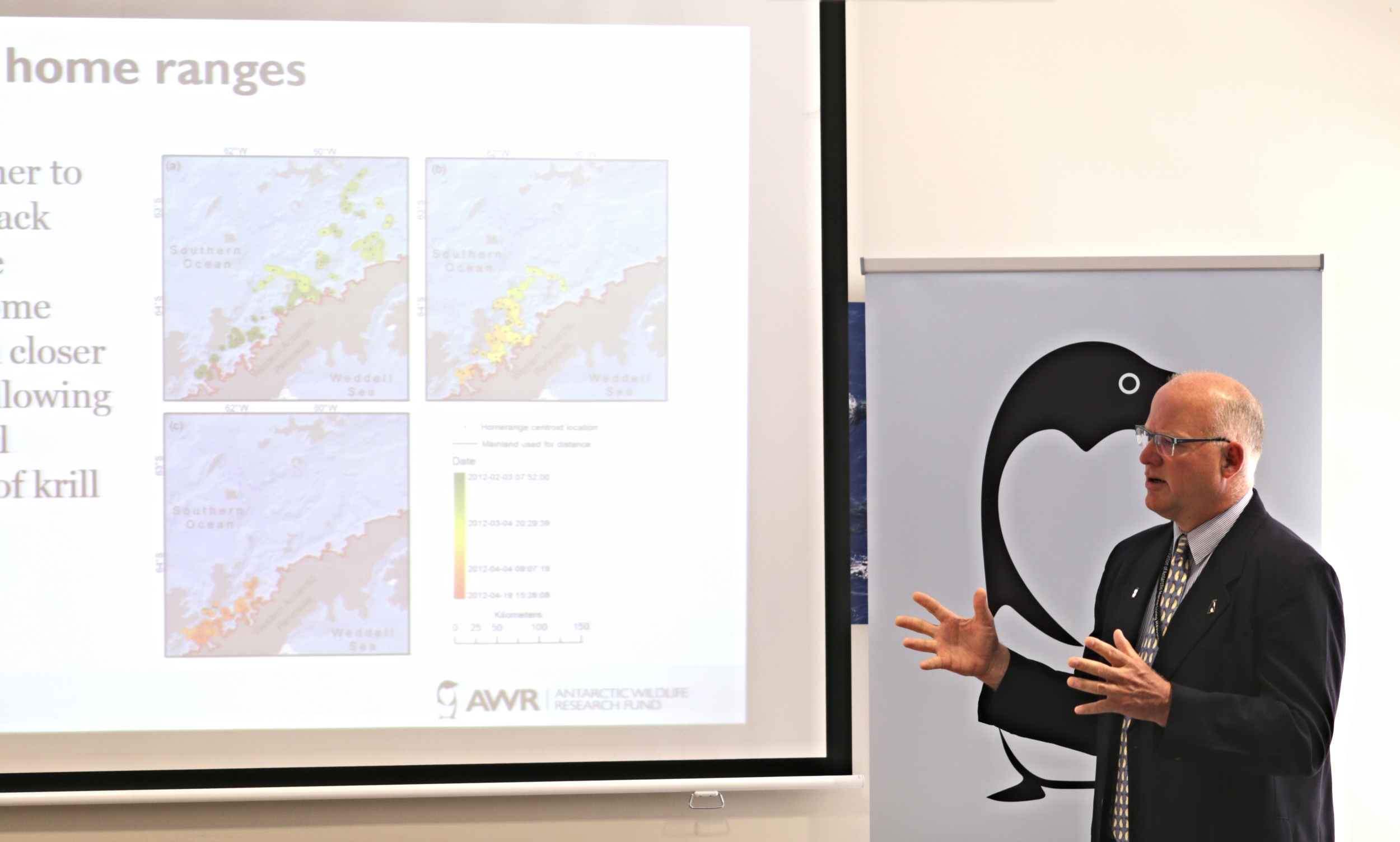The field season in Antarctica is getting closer, which means the start of the three research projects funded by the Antarctic Wildlife Research Fund’s first-ever research grants.
The scientists in the field will get close to the spectacular wildlife of Antarctica and the Southern Ocean. Photo: Rodolfo Werner
At an AWR hosted lunch seminar at CCAMLR-XXXIV in Hobart this October, the winning grant recipients introduced their scientific research projects. You can see the presentations here, and read more about the projects here:
Foraging range and habitat preference of non-breeding brush tail penguins
Do non-breeding Adélie, chinstrap, and gentoo penguins potentially use different habitats and feeding locations than those used by breeding penguins? That is something Dr. Andrew Lowther and his colleagues from Norwegian Polar Institute and British Antarctic Survey will explore during the summer at West Coronation Island, Signy Island and Powell Island. Lowther et al. aim to address the knowledge gap on adult, non-breeding, and therefore more mobile, birds in a region where most of the krill fishing in the Southern Ocean takes place. During the 2015-2016 field season they will collect at-sea foraging data on non-breeding adults at several different sites in the same year. These data will be collected with similar data on breeding adult penguins from each species, providing additional comparative studies on breeding and non-breeding penguins and the effects of interspecific competition between birds that are breeding versus those that are not breeding. This will contribute to a better overall understanding of the habitat and prey needs of penguins.
Andrew Lowther during the presentation of his research project on non-breeding penguins. Photo: Bob Zuur, WWF
Foraging behavior of humpback whales
Because of their enormous size, humpback whales have high energy demands that can only be met by foraging in areas where their prey are present in large numbers. As a result, humpback whales distribute themselves and move between areas of high prey abundance throughout the Antarctic feeding season. Dr. Ari Friedlander of Oregon State University and his colleague from Duke University will conduct a long-term ecological study on the foraging behavior of humpback whales around the Antarctic Peninsula. The goal is to determine how critical foraging areas relate to historic catches of krill in the region. By deploying satellite-linked time depth recording tags on whales throughout the Antarctic feeding season, the scientists aim to quantify if, when, where, and to what extent commercial fishing effort and humpback whale feeding co-occur. This information is important for managing fishing while also providing useful information on the biology and ecology of these top predators in a changing environment.
AWR's scientific advisor Rodolfo Werner presenting the project on behalf of Ari Friedlander. Photo: Bob Zuur, WWF
Ageing methodology for Antarctic krill
Unlike fish, krill lack hard parts from which age and growth can be measured, and they are too small and numerous to be tagged. To fill this gap for krill, Dr. Raouf Kilada and his colleagues from the US National Marine Fisheries Service and Australian Antarctic Division will explore a new direct ageing methodology for Antarctic krill based that looks for annual growth bands in the krill’s small and fragile eyestalk. Kilada et al. will conduct studies to validate this technique, which is based on existing technology, by comparing the eyestalk of krill to other crustaceans like shrimps and crabs. An understanding of the variability in population structure (growth, recruitment, and size at maturity) is necessary to manage the krill fishery appropriately. If shown to be robust, this technique would open up the possibility of making direct comparisons of the size at age of krill in different areas and in different time periods, increasing our knowledge of key characteristics of krill populations.
Werner handing over the AWR-penguin to Chris Reiss after his presentation on krill ageing methods. Photo: Monica Hägglund Langen
This beginning of these grant projects marks an important moment and the culmination of an enormous amount of effort by the AWR and the scientists involved. The Fund has also announced its second call for proposals which will allocate up to a total sum of USD $200,000 to fund Antarctic ecosystem research.
AWR uses a multi-step process to ensure that the best proposals are chosen, based on scientific advice from the independent Science Advisory Group, comprised of the world’s leading Antarctic scientists.
Maybe these two will be the first to welcome the AWR funded scientists to the field? Photo: Andrew Lowther





